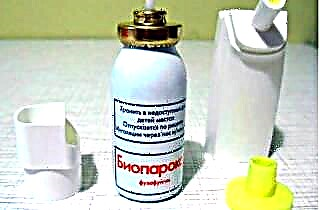 When should you use antibiotics for a cold in adults?
When should you use antibiotics for a cold in adults?
Antimicrobials should only be used if the inflammation has been caused by pathogenic bacteria.
Most often, rhinitis is provoked by viruses, but with inadequate treatment of ENT diseases, a bacterial infection joins them.
It can be eliminated only through systemic and local antibiotics.
What diseases are treated with antibiotics?
When to use an antibiotic for a cold in adults? Typically, antimicrobial medications are used to treat persistent and chronic rhinitis that lasts more than 7 days. If rhinorrhea pesters the patient for more than a week, most likely, the bacterial flora has managed to join the viral infection. This is evidenced by a deterioration in health, severe inflammation of the turbinates and purulent discharge from the nose.
The most common respiratory infections that are caused by bacteria and are associated with rhinitis include:
- sinusitis;
- chronic rhinitis;
- sphenoiditis;
- ethmoiditis;
- frontal.
Important! Antibiotic treatment is used exclusively on the recommendation of a doctor in case of ineffectiveness of traditional rhinitis therapy.
Despite the fact that antimicrobial agents do very quickly destroy pathogenic bacteria, they are recommended to be used only as a last resort. Systemic drugs that are absorbed into the systemic circulation negatively affect the intestinal microflora. Subsequently, this can cause dysbiosis and a decrease in local immunity. To prevent such consequences, antibiotics are recommended to be taken together with probiotics, which stimulate the production of "good" bacteria in the intestines.
Types of antibiotics
There are several main types of antimicrobial agents that differ in their principle of action. Some of them fight exclusively with coccal bacteria, others are capable of destroying almost any strains of pathogens. What are the best antibiotics for the common cold?
Depending on the therapeutic properties, the following antimicrobial agents are used to treat rhinitis:
- bactericidal - destroy the cellular structures of microbes, as a result of which their death occurs;
- bacteriostatic - inhibit the reproductive activity of bacteria, and therefore their number in the lesions decreases.
If bacteria are not prevented in time, the paranasal sinuses, throat, and auditory tubes will become inflamed over time.
With a strong severity of inflammation in the respiratory organs, doctors advise the use of bactericidal drugs. With their help, it is possible to disinfect the respiratory tract and normalize mucociliary clearance.
Features of antibiotic therapy
Inhalation solutions and nasal antibiotics for rhinitis are used most often due to the practical absence of adverse reactions. The components of local drugs are almost not absorbed into the systemic circulation and act directly on the lesions. If you start therapy on time, it will be possible to stop the bacterial inflammation in the nose in just 4-5 days.
 Active components of systemic drugs, i.e. tablets and solutions for injection, over time can accumulate in the liver, spleen and other malignant tissues. An overdose of drugs is fraught with the development of the following adverse reactions:
Active components of systemic drugs, i.e. tablets and solutions for injection, over time can accumulate in the liver, spleen and other malignant tissues. An overdose of drugs is fraught with the development of the following adverse reactions:
- dizziness;
- decreased appetite;
- headache;
- nausea and vomiting;
- dysbiosis;
- yellowing of the enamel of the teeth.
To prevent side effects, antibiotics are used no more than 7-10 days in a row. As a rule, therapy begins with taking drugs of the penicillin group. They very often cause allergic reactions, therefore, when undesirable effects appear, penicillins are replaced with macrolides or cephalosporins. The former are among the least toxic drugs and therefore are used even in pediatric practice, while the latter are the most effective antibiotics that are resistant to the action of microbes that produce beta-lactamase.
Rhinitis drops and sprays
A local antibiotic for the common cold is used to relieve purulent inflammation in the nasal cavity. Nasal drops and sprays are quickly absorbed into the nasopharyngeal mucosa and destroy pathogenic microbes in it. As practice shows, the local use of drugs prevents the occurrence of adverse reactions, therefore, they are included in the treatment of bacterial rhinitis in the first place.
The best antibacterial drops for intranasal administration include:
- "Framycetin";
- Novoimanin;
- "Neomycin".
The above funds have shown themselves well in the treatment of sinusitis and lingering rhinitis. However, the most effective sprays are still considered, the aerosol of which is absorbed into the tissue of the nasopharynx literally within a few minutes. In cases where a bacterial infection is spreading at a rapid pace, the following types of sprays are used to treat rhinitis:
- "Bioparox";
- "Isofra";
- "Polydexa".
It is undesirable to use antimicrobial sprays and drops in conjunction with other drugs for intranasal administration, as this can cause allergic reactions.
Systemic drugs
Antibiotics in injectable and tablet form are absorbed by the kidneys and liver, so they are recommended to be used only if there are serious indications. Before using the medicine, the patient must be examined by an ENT doctor and pass the appropriate tests to determine the causative agent of the infection. Only then will the specialist be able to select the most effective antibiotics for rhinitis.
Most often, the following tablets are used to eliminate purulent inflammation in the nasal concha and sinuses:
- "Ampitsilin";
- Sumamed;
- Augmentin;
- Clarithromycin;
- "Cefodox".
With a particularly severe course of respiratory diseases, antibiotics are administered intramuscularly. This ensures the rapid penetration of drug components into the systemic circulation. With the help of antimicrobial drugs, it is possible to eliminate not only rhinitis itself, but also the cause of its appearance - an infection.



